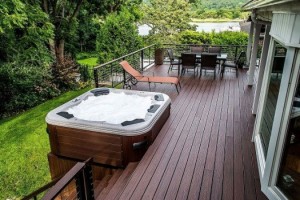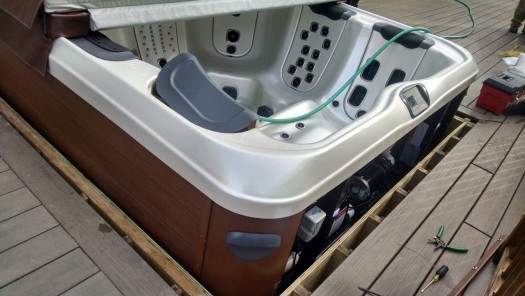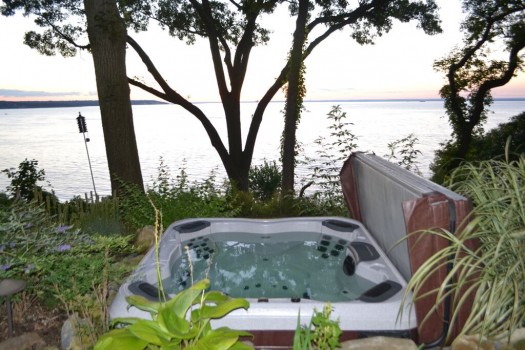 At Long Island Hot Tub, one of our most frequently asked questions is whether or not a permit will be required to have a hot tub installed in their backyard. So we went to our own Bill Renter to help our readers out.
At Long Island Hot Tub, one of our most frequently asked questions is whether or not a permit will be required to have a hot tub installed in their backyard. So we went to our own Bill Renter to help our readers out.
“I wish there was a simple answer, but with 137 different Long Island towns and villages, each with their own codes, and even though a hot tub is considered a portable appliance, some areas do require a permit.”
Bill suggests the easiest way to be certain is to contact your local building department, says Bill. Mainly, they want to see how your model conforms to local codes regarding property lines (set backs) or the minimum distance between installations and the lot line. Also, it’s possible to ‘google’ one’s own Town and type in ‘building codes’ and ‘hot tubs’ to get the needed information.
In some cases, you may need to go to the Town with a property survey (if need be, ask if it it can be hand drawn) and bring it, along the hot tub manufacturer’s brochure, to them. It’s also a good idea before going to ask them what else they need to know if anything. They will tell you of any other considerations might come into play.
“To help with this, we supply interested clients with a pdf of Bullfrog Spas’ brochure, highlighting relevant pages, that they can either send to the appropriate Town officials or bring along with them,” says Bill Renter.
Do you need a licensed electrician for the installation?
When clients ask us about permits, they usually also ask us whether they will need a licensed electrician when installing the hot tub.
“We can be definite about this: yes, a licensed electrician is required. This is because a hot tub uses heaters, filters, pumps, lights etc. — and on Long Island, one is required. From the electrician, hot tub purchasers will get an underwriter’s certificate indicating that it’s been inspected and approved to meet the NED (National Electric Code).”
Long Island Hot Tub staff can recommend someone for this, or new clients can use their own electrician. In the owners manual we provide, there are clear instructions on how a Bullfrog Spa is supposed to be wired and this can be shared with the electrician.
From what our clients tell us — and our own hot tub experiences — any effort required is well worth it. Happy hot tubbing!

Town Permits for Hot Tubs:
If your Town has hot tub codes related to safety issues, sections of the Bullfrog Spas owner’s manual can be helpful. These covers, for example, are very durable and include locking clips for added security when not in use. This cover locking system, when used correctly, meets the ASTM F1346-91 “Standard for Safety Covers” which may satisfy your Towns’ fencing and gating requirements.

Hot Tub Installation:
When it comes to hot tubs installed on Long Island, some Towns need to see how your model conforms to local codes regarding property lines (set backs) or the minimum distance between installations and the lot line.

Local Building Codes:
When it comes to hot tubs installed on Long Island, some Towns need to see how your model conforms to local codes regarding property lines (set backs) or the minimum distance between installations and the lot line.

Hot Tubs and Outdoor Living:
Whether or not you need a special permit to install a hot tub on Long Island, and whether or not you have a spectacular view, the rewards are well worth it.



